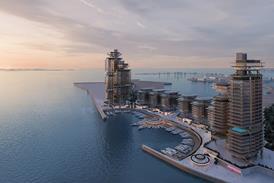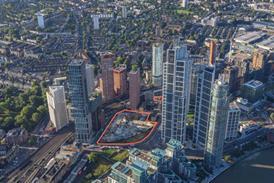The NZCBS proposes to limit emissions in the built environment in line with our nation’s climate targets, writes Dav Bansal

The beta version of the UK Net Zero Carbon Buildings Standard (NZCBS) is due later this summer. Once this has been road tested and feedback has been gathered, we stand to have a published industry standard, with a wide range of professional institutions aligned behind it, which will allow all construction disciplines to report carbon data in a standardised way.
The NZCBS, or ‘Standard’, proposes to limit emissions in the built environment in line with our nation’s climate targets - to limit global over-heating to 1.5°C above pre-industrial levels between now and 2050. Unlike other targets, too broad to be applied accurately, or too limited in their carbon assessment, it will do this by setting attainable sector-specific annual carbon budgets, including both embodied and operational carbon.
The engagement process for the Standard, headed up by Related Argent Chairman and chair of the NZCBS Governance Board, David Partridge, has been extensive. The initiative was founded by a cohort of leading built environment organisations, including UK Green Building Council, the Carbon Trust, RIBA, BRE and LETI. The industry-wide consultation to develop the Standard’s technical parameters received over 500 industry responses, helping the governance board to strike a balance between the top-down process of carbon budgeting for each sector, with bottom-up data gathering of benchmarks, in embodied and operational carbon.
Since then, the NZCBS team has hosted many stakeholder engagement workshops, and visited cities ranging from London to Glasgow, reaching over 300 major players in the real estate and built environment sector, to understand how best to drive industry engagement, uptake, and support for the Standard, and to ensure its targets will be useful, and usable, for everyone from architects to developers, investors, lenders, planners, owners and occupiers.
To be adopted and embedded across the whole built environment eco-system, the fundamental challenge in developing the Standard lies in delivering a single metric to verify built Net Zero carbon assets in line with our nation’s climate targets, at the same time as delivering on simplicity, clarity, and credibility.
Crucially, for architects, the Standard stands to play a crucial role in turning what is currently a Net Zero ‘crusade’ into what is ‘normal’
Howells is one of many architectural practices to have fed data into the technical consultation for the Standard, and late last year we hosted the first of the engagement sessions, kicking off with a roundtable at our Birmingham HQ, bringing together developers and advisors across the West Midlands and representatives from Birmingham City Council.
From these conversations, the need for a single carbon-specific target to defer to was clear, not least to give an explicit industry distinction between ‘carbon neutral’ and ‘Net Zero’ carbon, and to tackle greenwashing in the industry. Notably, while the Standard does not deter offsetting as a valuable, voluntary initiative, should organisations choose to go above and beyond the 1.5°C aligned budgets set by the Standard, it does not permit the use of carbon offsetting to meet its carbon limits.
Crucially, for architects, the Standard stands to play a crucial role in turning what is currently a Net Zero ‘crusade’ into what is ‘normal’ or expected from a building, bringing a considerable reduction to workload; architects frequently have to develop presentations and narratives around the issue of embodied and operational carbon, to convince and persuade clients, work which is currently being duplicated across the industry.
With the Standard firmly in place in the same way as building regulations, for example, resources could be rechannelled into finding the most innovative ways of reaching Net Zero, and excelling in other areas of the ESG agenda, such as boosting biodiversity and active travel. While the Standard would set a new bottom line, architects, developers and investors alike will inevitably look for new ways to break through this threshold and find a competitive edge.
Taking part in shaping this new industry Standard has been a fascinating, and rewarding process
As an industry-led initiative, which acts, with urgency, on the scientific warnings that have been issued, in line with the Paris Agreement, the Standard also holds the potential to pave the way for progressive policy making around carbon budgeting in construction by our new government, reducing the risk of new, untested, top-down regulations being imposed. But for this to play out, we must all acknowledge and embed it in our practice, clearly, swiftly and effectively.
Of course, as with any new benchmarking initiative, there are bound to be challenges to iron out, and new benefits to explore. The roundtable discussion we hosted explored the importance of ongoing alignment with existing national and international benchmarks, and the challenges around the validation and verification of a whole life carbon assessment, including how to delineate between occupier and developer accountability. We also discussed how to incentivise long-term thinking around creating a 2050-aligned building through financing, and how including the Standard in local authority public procurement could give it the traction it needs.
Taking part in shaping this new industry Standard has been a fascinating, and rewarding process, and we look forward to getting behind a concise and intelligible benchmark, which will create the industry-wide join up that is needed to collectively address the scale of the climate emergency we face.
Postscript
Dav Bansal is a partner at Howells
















5 Readers' comments